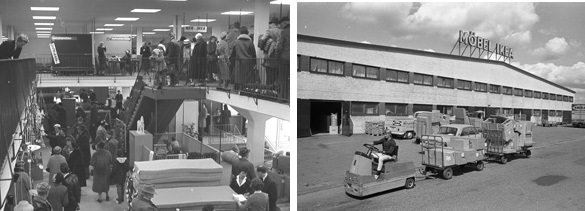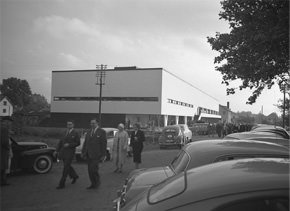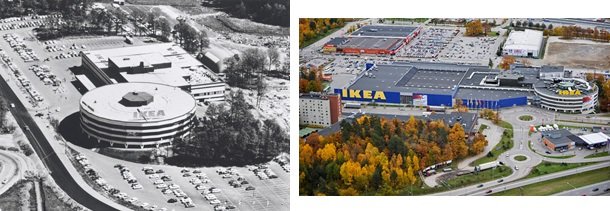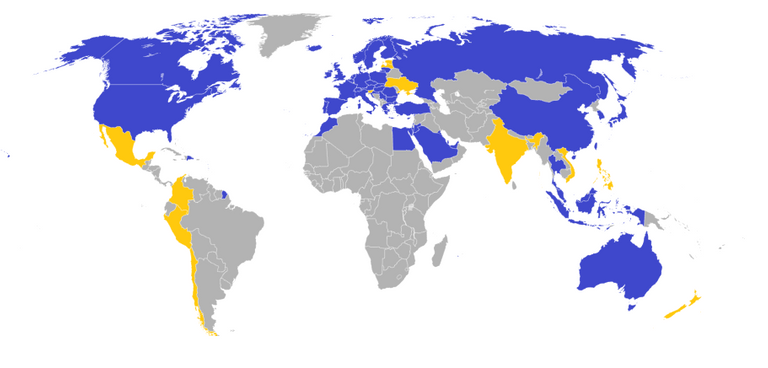
On the 27th of January 2018, Ingvar Kamprad passed away after a life of building one of the most successful companies in the world. He can surely be considered Sweden’s number one entrepreneur of all time.
As IKEA stores have now been established in many parts of the world, chances are you have visited one. I personally don’t really enjoy going to IKEA and only do when I must, but despite my complaints this company and its products are very useful. Where else can you find furniture, kitchen utensils and blue carrying bags for such a low price? And considering the price, the quality of everything is most often very high.

Versatile plastic bag. Great for carrying stuff in.
I first thought I’d go into the history of IKEA and the successful business that Kamprad started. In short, Kamprad seems to have always been a true entrepreneur. He first registered IKEA in 1943, as a 17-year old. By 1947, it was a mail-order company which he ran from his home.

Soon household items started to dominate the catalogue and in 1953, IKEA opened a permanent furniture showroom in Älmhult, in the south of Sweden. Here, customers could experience the products in real life before ordering them.

After upsetting competitors in the furniture business in the 1950s (likely due to IKEA’s low prices), suppliers were convinced to boycott IKEA. This led to IKEA starting to design its own products, which in the end probably further advanced the successful business model of the company – including the flat packaging for easy transport and self-assembly concept.
Traditional furniture stores usually bought and displayed what the furniture makers produced, and the customers had to buy what the furniture stores had in stock or could order. Ingvar Kamprad tried to influence both the customers and the factories. He attracts customers with products of good design, function and low price. He attracts factories with large orders. Larger orders meant lower purchasing prices; thus enabling lower sales prices, more customers and higher sales volumes. This was a revolution. Without anybody noticing it, the largest change to date in furniture distribution had taken place.
The first big IKEA store, more like we know them today, opened in 1958 – in Älmhult.

The international expansion of IKEA started with small start-up stores in Norway in 1963 and in Denmark in 1969. A flagship store in Kungens Kurva outside of Stockholm was opened in 1965, a huge investment at the time.

IKEA Kungens Kurva, then and today.
The first store to open outside Scandinavia was in Switzerland, in 1973. Today, IKEA has hundreds of stores across the world.

Countries with existing stores (blue) and with planned ones (yellow).
In the 1970s, following increasingly leftist policies in Sweden, many family businesses left the country in order to avoid excessive taxation and the risk of being forced to sell their companies in the event of an inheritance. Thus, Kamprad and his family left Sweden for some time, along with certain functions of the company. Even though some of these insane polices have been reversed since then, IKEA is today comprised of various companies with different roles and ownership structures, registered in various countries to optimize taxation and the like. This is, of course, nothing unique among multinational companies today, but it goes to show how excessive taxation and regulations in practice can only be avoided be the big players. Small businesses in general have to make do with the local regulations, since this kind of planning is quite demanding, thus giving them a disadvantage. I don’t know what Kamprad would have thought when it comes to these things, but it is good to remember that big business usually gets a competitive advantage over small business with increased taxes and regulations. In other words, making it harder to enter and stay in the market keeps competition away.
Anyway, back to IKEA. The years from its inception to worldwide furniture empire has generally been one of great success. Kamprad himself surely was the big driver for this development most of the time and he remained engaged in the business up until his death. Some of the business mindset contributing to the success can perhaps be found in the booklet he published in 1976:
“We have decided once and for all to side with the many people. What is good for our customer is also, in the long run, good for us. This is an objective that carries obligations.”
The text contains nine theses, among others the following:
“Profit gives us resources”, “Simplicity is a virtue” and “Doing it a different way”. “Most things still remain to be done. A glorious future.”
Let’s see if the company can remain as successful without its founder now longer around. Interestingly, IKEA is not and has never been a publicly traded company.
And let’s not forget back in 2014 when IKEA even out-innovated Apple:
Have a great day!
Stockholm, 2018-01-30
Thanks, very good post !!!!
Awesome Work!

Keep it up!!!
@cryptoinvestinfo
What is your favorite hardware Wallet?
thank you very much for the post. subscribe to my blog. write about the holidays!
If you mention the Semla next Tuesday, I will definitely follow ;)
https://en.wikipedia.org/wiki/Semla
Congratulations @absolutevalue! You have completed some achievement on Steemit and have been rewarded with new badge(s) :
Click on any badge to view your own Board of Honor on SteemitBoard.
For more information about SteemitBoard, click here
If you no longer want to receive notifications, reply to this comment with the word
STOPhttps://steemit.com/cryptocurrency/@tanvirabedin/dogecoin pls follow and upvote me i also doing this.... pls